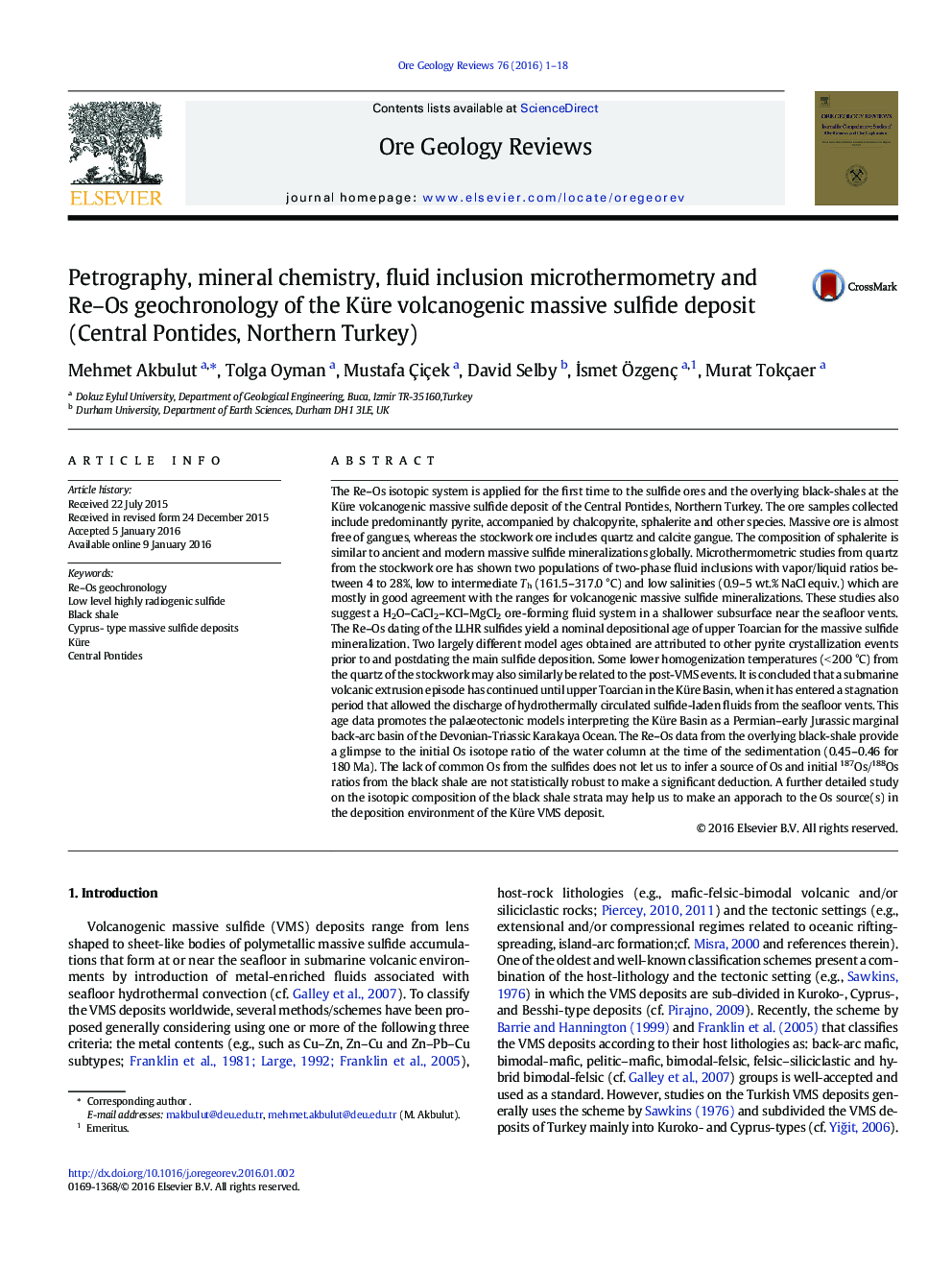| کد مقاله | کد نشریه | سال انتشار | مقاله انگلیسی | نسخه تمام متن |
|---|---|---|---|---|
| 4697061 | 1637230 | 2016 | 18 صفحه PDF | دانلود رایگان |

• Sphalerite mineral chemistry from Küre VMS shows analogy with VMS data elsewhere.
• Microthermometry from the quartz mostly correlates with ranges from VMS deposits.
• Re–Os dating of pyrites yield an upper Toarcian deposition age for the Küre VMS.
• Younger pyrite model age and some low Th from quartz may suggest post-VMS events.
• Data promotes the Küre Basin as a marginal back-arc basin of the Karakaya Ocean.
The Re–Os isotopic system is applied for the first time to the sulfide ores and the overlying black-shales at the Küre volcanogenic massive sulfide deposit of the Central Pontides, Northern Turkey. The ore samples collected include predominantly pyrite, accompanied by chalcopyrite, sphalerite and other species. Massive ore is almost free of gangues, whereas the stockwork ore includes quartz and calcite gangue. The composition of sphalerite is similar to ancient and modern massive sulfide mineralizations globally. Microthermometric studies from quartz from the stockwork ore has shown two populations of two-phase fluid inclusions with vapor/liquid ratios between 4 to 28%, low to intermediate Th (161.5–317.0 °C) and low salinities (0.9–5 wt.% NaCl equiv.) which are mostly in good agreement with the ranges for volcanogenic massive sulfide mineralizations. These studies also suggest a H2O–CaCl2–KCl–MgCl2 ore-forming fluid system in a shallower subsurface near the seafloor vents. The Re–Os dating of the LLHR sulfides yield a nominal depositional age of upper Toarcian for the massive sulfide mineralization. Two largely different model ages obtained are attributed to other pyrite crystallization events prior to and postdating the main sulfide deposition. Some lower homogenization temperatures (< 200 °C) from the quartz of the stockwork may also similarly be related to the post-VMS events. It is concluded that a submarine volcanic extrusion episode has continued until upper Toarcian in the Küre Basin, when it has entered a stagnation period that allowed the discharge of hydrothermally circulated sulfide-laden fluids from the seafloor vents. This age data promotes the palaeotectonic models interpreting the Küre Basin as a Permian–early Jurassic marginal back-arc basin of the Devonian-Triassic Karakaya Ocean. The Re–Os data from the overlying black-shale provide a glimpse to the initial Os isotope ratio of the water column at the time of the sedimentation (0.45–0.46 for 180 Ma). The lack of common Os from the sulfides does not let us to infer a source of Os and initial 187Os/188Os ratios from the black shale are not statistically robust to make a significant deduction. A further detailed study on the isotopic composition of the black shale strata may help us to make an apporach to the Os source(s) in the deposition environment of the Küre VMS deposit.
Figure optionsDownload as PowerPoint slide
Journal: Ore Geology Reviews - Volume 76, July 2016, Pages 1–18